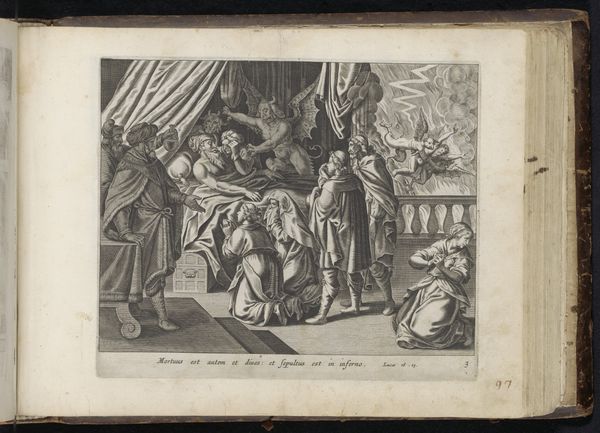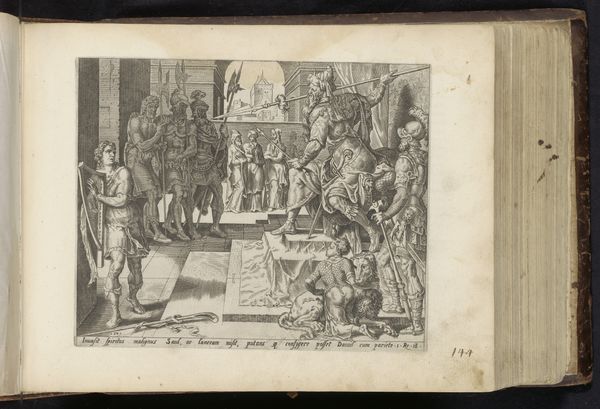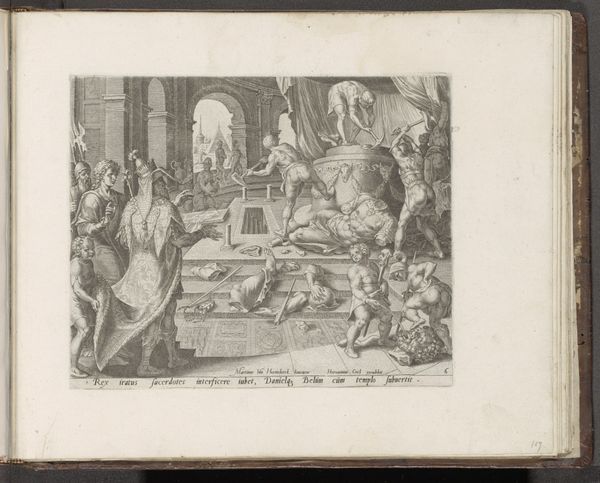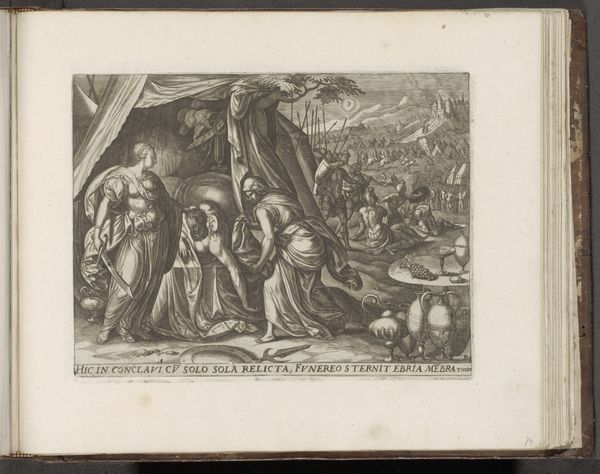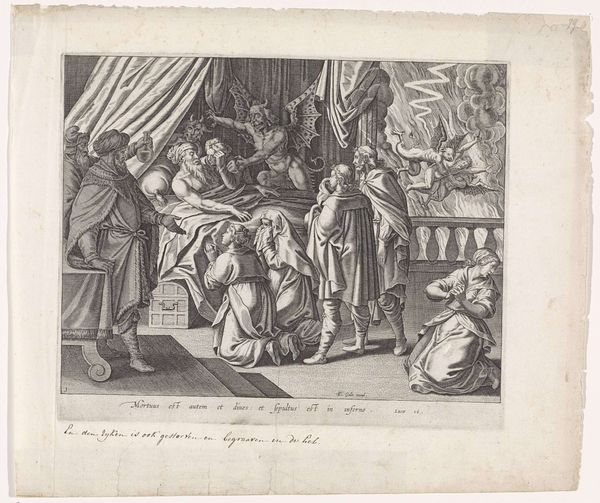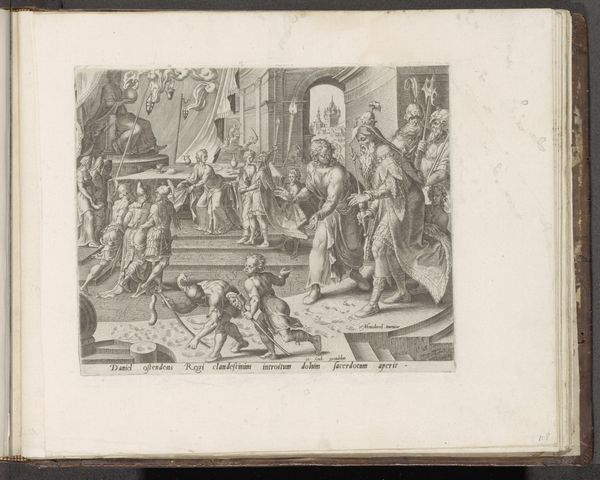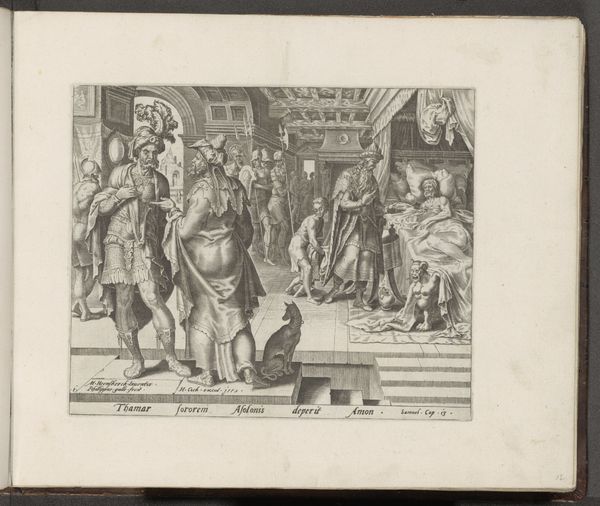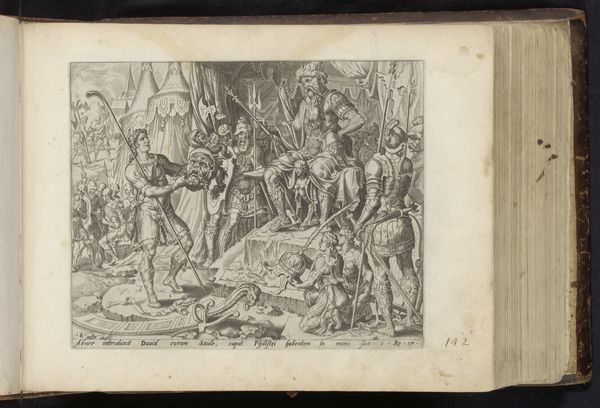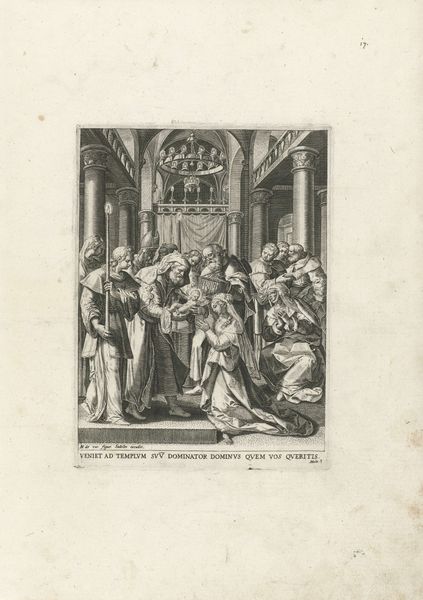
Nebukadnessar ziet dat Sadrach, Mesach en Abednego ongedeerd zijn 1565
0:00
0:00
philipsgalle
Rijksmuseum
drawing, print, paper, ink, engraving
#
drawing
#
narrative-art
# print
#
mannerism
#
paper
#
ink
#
history-painting
#
engraving
Dimensions: height 205 mm, width 248 mm
Copyright: Rijks Museum: Open Domain
Curator: The crispness of the engraving in this 1565 print immediately captures the eye. Made by Philips Galle, it’s titled "Nebukadnessar ziet dat Sadrach, Mesach en Abednego ongedeerd zijn," or "Nebuchadnezzar Sees Shadrach, Meshach, and Abednego Unharmed." It employs ink on paper, typical for the period, housed now in the Rijksmuseum. Editor: It strikes me first by its very formal, stiff organization of bodies; the central placement of the furnace almost turns this fiery ordeal into a theatrical display for the king. Curator: Mannerism indeed lends itself to staged drama, with heightened tension expressed through elongated figures and complex compositions. Consider the very self-aware presentation. The king and his entourage gaze upon a scene meant to showcase power, but ironically reveals divine intervention, as seen from the text accompanying it. Editor: Do you think that subverts the intended power dynamic, showing the limitations of human authority when juxtaposed with something beyond it? How did the socio-political climate affect readings of such images, do you think? Curator: Without question. During the religious and political turmoil of the Reformation, visual narratives like these became potent tools for reinforcing beliefs and bolstering identities within the social landscape. They served not only as records, but as propaganda. Editor: Note how the engraving technique allows Galle to create varied textures - from the metallic sheen of the armor to the billowing flames. This detail adds a layer of realism that pulls you into the scene, yet the composition has an unnatural feel to it, too, in terms of proportions and depth. Curator: Exactly. Galle’s choice to blend intricate detail with slightly distorted forms is part of Mannerism’s signature style. It moves beyond pure representation, aiming for a more emotionally and intellectually engaging experience. Editor: It does give us plenty to ponder regarding religious, social, and art historical factors. The combination of symbolism and complex narrative creates an intense and memorable image. Curator: Ultimately, this engraving encapsulates the intersection of religious narrative and artistic innovation characteristic of its time, inviting contemplation beyond its visual confines.
Comments
No comments
Be the first to comment and join the conversation on the ultimate creative platform.
